SMC Wireless Network Storage Adapter Review
SMC Wireless Network Storage Adapter
NAS devices don't have to be tucked away in a server rack, as SMC has proved.
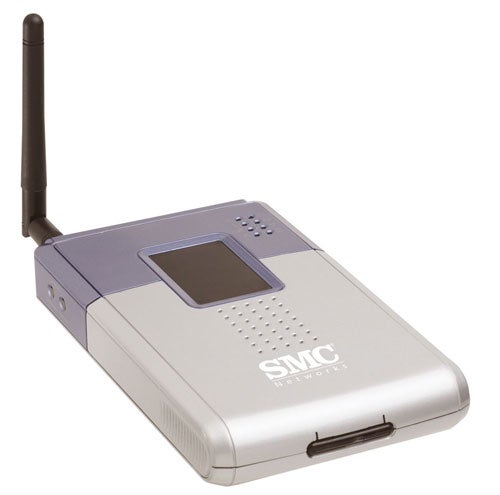
Verdict
Key Specifications
- Review Price: £66.96
The growth in NAS (network attached storage) has been quite phenomenal this year but the one area few products if any tackle is portability. SMC’s latest SMCWAPS-G aims to deliver such a solution as this compact little slab of plastic is designed to allow external USB storage devices to be shared over wired and wireless networks. In fact, you don’t even need a separate storage device as the box also has an internal Ultra DMA 133 IDE interface which accepts a 2.5in hard disk.
Empty, the unit weighs a mere 196gms and measures a very modest 92 x 162 x 25mm. At the rear you get a pair of USB 2.0 ports plus a Fast Ethernet port and the chassis incorporates an 802.11g wireless access point. A single, detachable aerial screws in at the back and the unit is powered by a reasonably small supply which adds a further 154g to your running weight.

The smoked plastic panel in the centre of the unit appears to be merely cosmetic but the unit does come with a stack of status LEDs. You get no less than eight indicators showing power, LAN, WLAN and USB port status along with internal HDD status and activity plus a warning light for when hard disk capacity is reaching its limit or there is a disk error. Two recessed buttons at the side control power and the backup feature, while pressing both together will reset the unit back to factory defaults.
The backup button will prove useful as it initiates a copy of data on any attached USB device to the internal hard disk. This is similar to the Backup Button feature offered by Infrant’s ReadyNAS NV but you do not have any options to customise operations. Pressing the button will simply copy everything from the USB disk to a new folder named with the date.
One really silly design fault is that the two USB ports are so close together that it’s impossible to fit two USB flash drives at the same time. The only way to do this is to use a pair of USB extension cables but even here it’s a tight fit. Adding an internal hard disk is easy enough as you remove a couple of screws at the back and unclip the entire front panel. We slipped an IBM 2.5in drive inside and had the lid back on in a couple of minutes.
Installation takes a matter of minutes and SMC supplies a small utility that searches for these devices on the network. It’s a handy tool but the window is actually too small and once you know the unit’s IP address it’s easier to swap over to a standard web browser. A wizard takes you through initial configuration where you can choose DHCP server or client functions, set the time and date, activate the wireless services and choose a mode.
The unit can act as a standard access point which supports SSID masking, MAC address filtering, 64/128-bit WEP, WPA and 802.1x user authentication using an external RADIUS server. A client mode has a handy search tool which lists all discovered access points available for connection and you can use WEP or WPA encryption.
For file serving the device runs a simple Samba server so it’ll support any client that can connect to this. An open ‘guest’ access mode can be used or you can apply an internal list of up to five username and password combinations. Shares can be created on both the internal hard disk and USB devices and read only or write access granted. Anonymous FTP services are also available for up to five concurrent users and the shared directories previously created apply to this service as well.
—-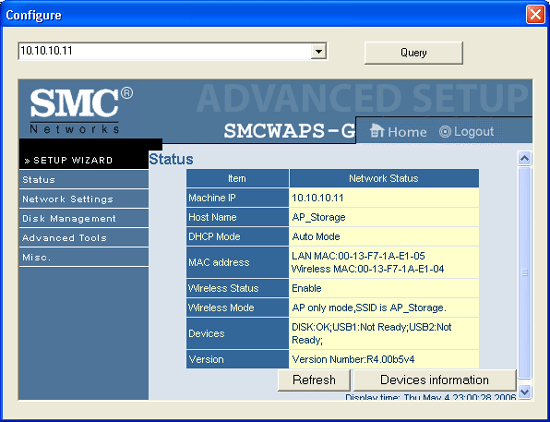
”’SMC’s Configure utility helps initial setup but the interface can’t be resized.”’
—-
LAN performance isn’t too bad for such a versatile little device. Using standard Windows file sharing we copied a 36MB MPEG file from the server to a PC on the LAN which took 12 seconds for an average of 3MB/sec, while copying it back to the server returned an average of 2.25MB/sec. Copying the file over FTP to the PC also took 12 seconds. Speed dipped a little for the USB ports as copying the same file from a USB 2.0 flash disk to a PC and back again saw averages of 2.5MB/sec and 1.4MB/sec respectively.
Using a Fujitsu Siemens LifeBook equipped with a triple speed Proxim wireless card we tested raw wireless speeds using Iometer. On a close range open connection between the notebook and a PC with the server acting as an access point we saw a raw throughput of 29.6Mbit/sec. Without MIMO trickery to help it along speed settled to a modest 14Mbit/sec when we moved the notebook to the floor below. With 128-bit WEP and WPA-PSK on the case these speeds dropped by around 15 and 22 per cent respectively.
”’Verdict”’
As a NAS appliance the SMCWAGS-G is a little basic with at best average performance but factor in its extreme portability, support for USB and internal IDE disks, useful 802.11g multi-function wireless capabilities and good security and you have one very handy little storage device for mobile users.
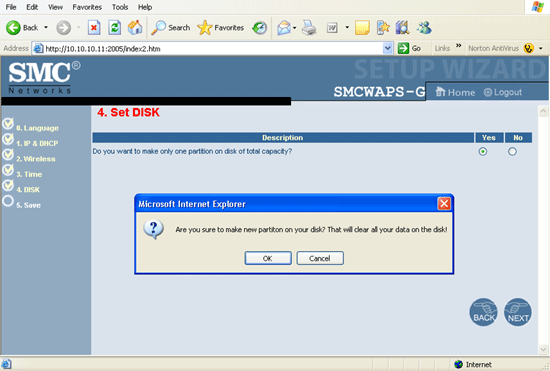
A setup wizard takes you through basic wired, wireless and storage configuration.
—-
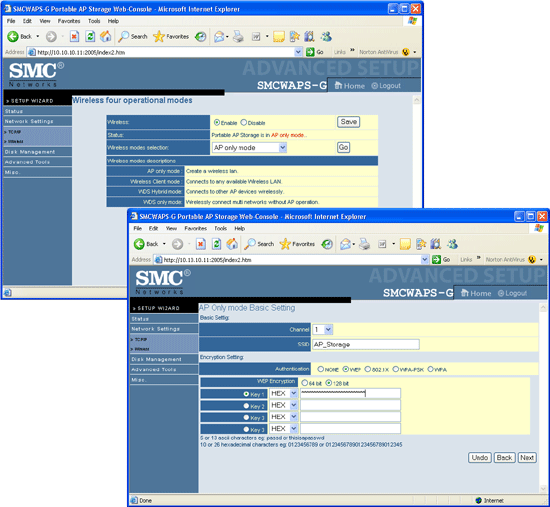
Wireless features are surprisingly good with plenty of security options as well.
—-
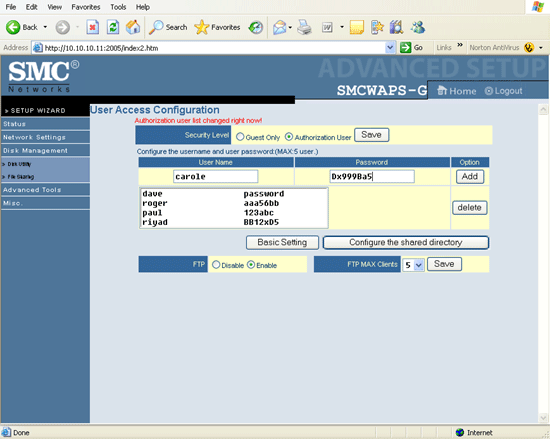
File sharing can be protected with up to five username and password combinations.
—-
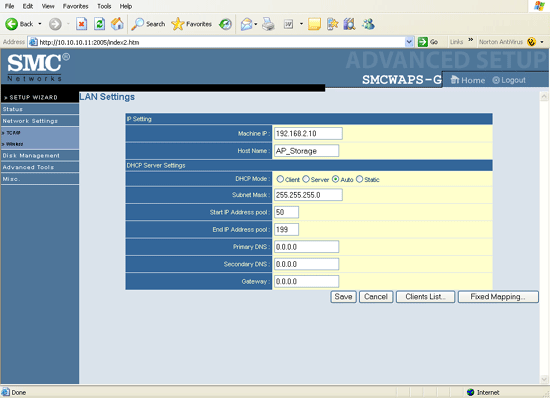
SMC supports multiple DHCP operation modes making installation even easier.
—-

